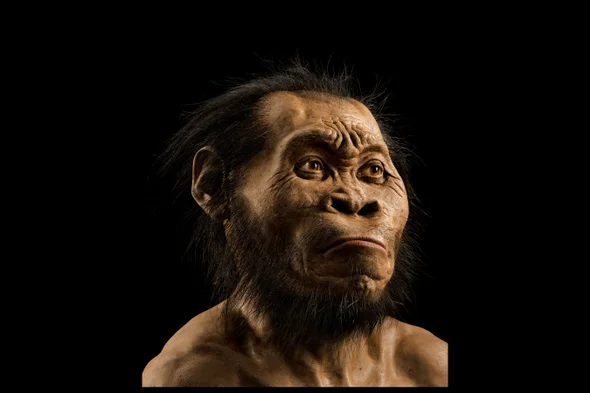Pratiksha Shome
The size of the human brain has increased thrice throughout the millions of years that it has been evolving, and behaviour has become exponentially more complex. Simple stone tools were all that the early, small-brained hominins (human family members) could produce. Later, more intelligent ancestors created more advanced tools and established more sophisticated sustenance techniques. As for behavioural complexity in our own clumsy species, Homo sapiens, well, we went all out—building technology that allowed us to travel to every corner of the earth, burying our dead ritualistically, creating huge social networks, and producing shared-meaning art, music, and language. Scientists have long assumed that these developments in technology and cognition were driven by larger brains. Now shocking new findings at a fossil site in South Africa are calling into question this fundamental principle of human evolution.
The small-brained prehistoric human species Homo naledi participated in a number of sophisticated behaviours that were previously only linked with large-brained hominins, according to researchers working in the Rising Star cave system near Johannesburg, South Africa. They claim that H. naledi, whose brain was about one-third the size of our own, used fire as a source of light, went to great lengths to bury its dead, and engraved designs that were probably symbolic in the rock walls of the cave system in three preprint papers that describe their findings and will be published in the journal eLife. Although the results are preliminary, they may force scientists to reconsider how humans evolved if further study confirms them.
H. naledi is a relatively new species to the pantheon of hominin species that are recognised. From deep within Rising Star, a team led by paleoanthropologist Lee Berger of the University of the Witwatersrand in Johannesburg—currently an explorer in residence for National Geographic—recovered more than 1,500 fossil samples that belonged to at least 15 individuals in 2013 and 2014. The fossils showed a hominid with an unusual fusion of traditional and modern characteristics. Its hands were nimble like ours, and it walked fully erect like modern humans do. According to team member John Hawks of the University of Wisconsin-Madison, however, its shoulders were constructed for climbing and its teeth were fashioned like those of earlier hominins in the genus Australopithecus.
The brain size of H. naledi was the most astonishing, measuring only 450 to 600 cubic centimetres. The average human brain measures about 1,400 cubic centimetres, for comparison. In 2015, Berger and his team announced the finding of a brand-new species to science. The fossils were dated to between 335,000 and 236,000 years ago, which is shockingly recent for a species with such a small brain and other basic characteristics. Two years later, they were able to determine the age of the remains.
Read more about this on Scientific American.





